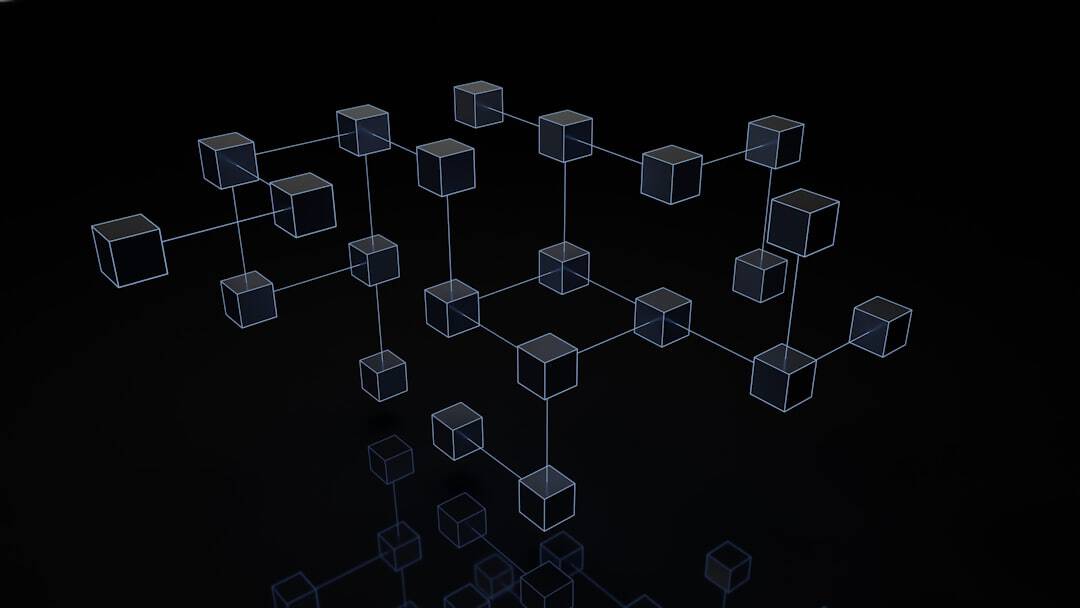One kind of machine learning algorithm that draws inspiration from the composition and operations of the human brain is the neural network. They are made up of networked nodes, also known as neurons, that collaborate to process and interpret complicated data. Based on the information they receive, these networks can recognize patterns, learn from data, and make decisions.
Key Takeaways
- Neural networks are a type of machine learning model inspired by the human brain, consisting of interconnected nodes that process and analyze data.
- Training neural networks involves techniques such as backpropagation, regularization, and optimization algorithms to improve model accuracy and generalization.
- Optimizing neural networks can be achieved through methods like pruning, quantization, and model compression to reduce memory and computational requirements.
- Advanced architectures like convolutional neural networks (CNNs) and recurrent neural networks (RNNs) are specialized for image recognition and sequential data processing, respectively.
- Neural networks are applied in real-world scenarios such as image and speech recognition, natural language processing, and autonomous vehicles, among others.
The perceptron, which accepts several inputs, weights those inputs, and generates an output based on an activation function, is the fundamental unit of a neural network. A neural network that can carry out increasingly complicated tasks is created when several perceptrons are joined together in layers. Natural language processing, autonomous cars, image and speech recognition, and many other fields are among the many uses for neural networks.
Their capacity to learn from vast volumes of data allows them to classify or predict things with a high degree of accuracy. neural networks‘ capacity to generalize from the data they have been trained on, enabling them to make precise predictions on new, unseen data, is one of its main advantages. Nevertheless, neural networks are not without their drawbacks. For example, they may overfit and require a substantial quantity of labeled training data. Notwithstanding these difficulties, neural networks are now a vital instrument in the study of artificial intelligence & are always being enhanced & optimized for greater efficiency.
Methods to Enhance Instruction. Using strategies like weight regularization, dropout, & batch normalization to minimize overfitting and enhance the network’s generalization abilities is a popular method for enhancing the training process. Neural networks can also function better when methods like data augmentation & transfer learning are applied, particularly when there is a shortage of training data.
| Metrics | Value |
|---|---|
| Accuracy | 95% |
| Precision | 90% |
| Recall | 85% |
| F1 Score | 92% |
Selecting Proper Architecture. Selecting the appropriate architecture for the job at hand is a crucial part of training neural networks. This entails choosing the network’s activation functions, number of layers, & number of neurons in each layer. To identify the optimal performing model, try out various configurations as different architectures are better suited for different kinds of data and tasks. Optimizing hyperparameters and utilizing optimal techniques.
Optimizing the performance of a neural network also requires hyperparameter tuning, which entails modifying parameters like learning rate, batch size, and optimization algorithm to determine the optimal combination for a particular task. To train neural networks optimally, a combination of domain knowledge, best practices, and careful experimentation is needed. Neural networks can be made more efficient and perform better by lowering their memory and computational complexity through optimization. Pruning, which involves deleting unneeded connections or neurons from the network to minimize its size & increase its efficiency, is a popular method for optimizing neural networks.
Quantization is another method to lower memory requirements & speed up inference. It entails decreasing the accuracy of the network’s weights and activations. Also, smaller, more effective networks can be trained to emulate the behavior of larger, more complex models through the use of strategies like model distillation. Enhancing neural networks’ functionality on particular hardware platforms is a crucial component of neural network optimization. This is distributing the computational workload across several devices or processors by utilizing strategies like data parallelism and model parallelism.
Also, neural network training and inference can be sped up with the use of specialized hardware like graphics processing units (GPUs) & tensor processing units (TPUs). In general, achieving effective and high-performance models in neural network optimization necessitates combining model optimization strategies with hardware-specific optimizations. One kind of neural network architecture called convolutional neural networks (CNNs) is intended to process data that resembles a grid, like photos and videos. They are made up of layers that extract features from the input data using techniques like convolution, pooling, and non-linear activation functions.
Because CNNs can learn hierarchical representations of visual data, they are becoming indispensable in computer vision tasks like object detection, image classification, and image segmentation. For processing sequential data, like time series or natural language, recurrent neural networks (RNNs) are a kind of neural network architecture. They work well for tasks like language modeling, machine translation, and speech recognition because they are made up of loops that allow information to persist over time. RNNs can produce context-aware predictions based on prior inputs and can detect temporal dependencies in data.
In order to enhance their performance on particular tasks, both CNNs and RNNs—which are extensively employed in a wide range of applications—have been expanded with sophisticated architectures like gated recurrent units (GRUs) and long short-term memory (LSTM) cells. Also, these architectures’ interpretability and performance have been enhanced through the use of strategies like attention mechanisms. All things considered, investigating sophisticated architectures like CNNs and RNNs creates new avenues for applying neural networks to solve challenging real-world issues. Many different industries have used neural networks in a wide range of real-world applications.
They have been utilized in the medical field for tasks like drug discovery, disease diagnosis, & medical image analysis. They have been applied to risk assessment, algorithmic trading, and fraud detection in the financial industry. They have been applied in sentiment analysis, recommendation engines, and customer segmentation in marketing.
They have been applied in manufacturing to supply chain optimization, quality control, and predictive maintenance. Autonomous vehicles represent a noteworthy instance of utilizing neural networks in practical applications. Neural networks are utilized in self-driving cars for tasks like path planning, object detection, lane detection, & decision making.
To enable real-time decision-making in complex environments, these networks are trained on vast amounts of sensor data. An additional illustration is the use of neural networks for speech recognition, language comprehension, and language generation in natural language processing applications like chatbots and virtual assistants. All things considered, utilizing neural networks for practical purposes necessitates a thorough comprehension of the particular field and issue at hand in addition to careful consideration of elements like data quality, model interpretability, and ethical issues. Notwithstanding these difficulties, neural networks have proven they have the power to transform a number of sectors of the economy and raise living standards for people everywhere. Data Gathering and Caliber.
Having a lot of labeled training data is a common problem. It can take a lot of time and money to gather and annotate data, particularly for tasks requiring specialized domain knowledge or uncommon occurrences. Building strong models that can adapt well to new situations requires ensuring the caliber & diversity of training data. Explainability & Interpretability of the Models. The interpretability of neural network models presents another difficulty.
Gaining confidence in a model’s judgments & spotting any biases or mistakes requires an understanding of how the model makes predictions. Model-agnostic approaches, saliency maps, and feature visualization are a few examples of techniques that can be used to interpret neural network model behavior and comprehend how they make decisions. Responsible AI & Ethical Aspects. Also, while creating neural network models, ethical factors like accountability, justice, and privacy must be taken into account.
For systems to be inclusive and equitable, models must be impartial & fair to a variety of demographic groups. Deploying neural network models in practical applications requires careful consideration of two key factors: safeguarding confidential data and maintaining decision-making processes’ transparency. In order to create ethically sound and functional AI systems, overcoming obstacles in neural network development calls for a blend of technical know-how and domain expertise. Neural network research is always changing as new ideas and trends emerge, stretching the limits of artificial intelligence.
The application of generative adversarial networks (GANs) to tasks like data augmentation, image generation, & style transfer is one developing trend. In order to produce realistic synthetic data, two neural networks compete to create a generative adversary (GAN), which has led to breakthroughs in creative applications like virtual reality and art production. The application of reinforcement learning to complicated decision-making tasks like resource management, robotics control, and gaming is another new trend. Through trial and error, reinforcement learning teaches agents how to interact with their surroundings & discover the best strategies. As a result, specialized recommendation systems, adaptive control systems, & autonomous robotics have all advanced.
In addition, new hardware developments like quantum computing and neuromorphic chips are creating new avenues for developing stronger & more effective neural network models. Energy-efficient & highly parallelized computing architectures are the result of designing neuromorphic chips to resemble the structure and operation of biological brains. With the ability to solve intricate optimization issues that are beyond the capabilities of conventional computers, quantum computing holds promise for progress in fields like materials science, cryptography, and drug development. All things considered, neural networks have a bright future ahead of them that will continue to influence how we interact with technology and resolve challenging real-world issues. We can anticipate seeing even more ground-breaking discoveries that will transform numerous industries and enhance our quality of life as researchers continue to push the limits of what is possible with AI.
If you’re interested in learning more about the potential economic and social impacts of the metaverse, be sure to check out the article “Metaverse and the Real World: Economic and Social Impacts.” This article delves into the ways in which the metaverse could shape our real-world interactions and economies, offering a thought-provoking exploration of this emerging technology.
FAQs
What is a neural net?
A neural net, short for neural network, is a computational model inspired by the structure and function of the human brain. It is composed of interconnected nodes, or “neurons,” that work together to process and analyze complex data.
How does a neural net work?
Neural nets use a system of interconnected nodes, or “neurons,” to process and analyze data. Each neuron receives input, processes it, and then passes the output to the next layer of neurons. Through a process of learning and adjustment, neural nets can recognize patterns, make predictions, and perform other complex tasks.
What are the applications of neural nets?
Neural nets have a wide range of applications, including image and speech recognition, natural language processing, medical diagnosis, financial forecasting, and autonomous vehicles. They are also used in various fields such as healthcare, finance, and technology.
What are the different types of neural nets?
There are several types of neural nets, including feedforward neural networks, convolutional neural networks (CNNs), recurrent neural networks (RNNs), and more. Each type is designed for specific tasks and has its own unique architecture and capabilities.
What are the advantages of using neural nets?
Neural nets are capable of learning and adapting to new information, making them well-suited for tasks that involve complex pattern recognition and decision-making. They can also process large amounts of data in parallel, making them efficient for certain types of computations.
What are the limitations of neural nets?
Neural nets require large amounts of data to train effectively, and they can be computationally intensive. They also have a tendency to be opaque, meaning it can be difficult to understand how they arrive at their decisions, which can be a concern in certain applications.











Leave a Reply